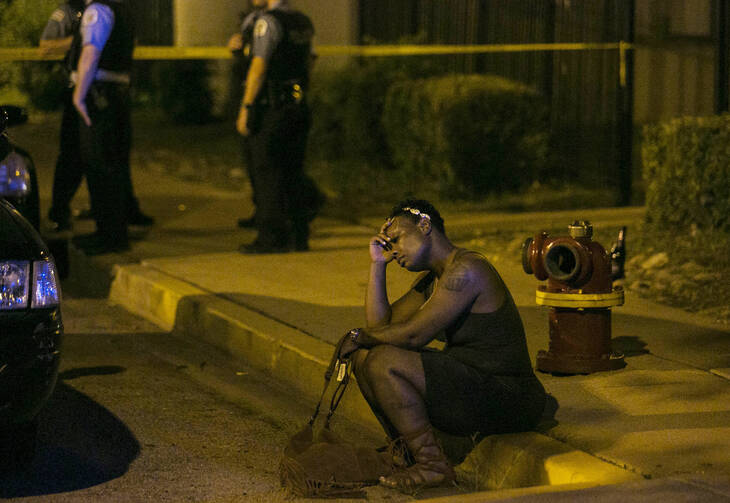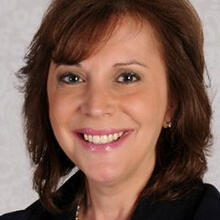Army veteran Abner Garcia never saw combat during his time in the military. But he witnessed plenty of violence in the neighborhood where he grew up on Chicago’s West Side.
“My uncle came home and he was shot. We had to take him to the hospital,” Garcia recalled earlier this year. “A rival gang member threw up his gang sign, walked up to him, put the gun right up to him and shot him a lot of times. That was my first time seeing that kind of stuff, seeing someone hurt, seeing someone die in front of me.”
Garcia was 5 years old at the time.
A few months after Garcia gave that interview he too was dead—a casualty of the city’s increasing bloody gang wars. A van pulled alongside Garcia’s car as he was returning home from an evening with relatives and friends. Passengers inside the van flashed gang signs, angry words were exchanged, then someone opened the van’s door and fired, hitting Garcia in the head. He was 23.
Garcia’s death stunned those in the tightly knit community of grass-roots activists trying to stem Chicago’s violence. Garcia was a volunteer in a Y.M.C.A.-sponsored group called Urban Warriors, a program that pairs veterans with kids traumatized by violence and tries to steer teens away from gangs. He also was studying criminal justice at the University of Illinois/Chicago. He wanted to be a police officer.
Chicago’s long, hot summer is coming to an end, but the shooting continues. Over the three-day Labor Day weekend, 65 people were shot, 13 fatally, as homicides climbed toward 500 for the year. August was already on record as the city’s deadliest month in more than two decades.
The wounded this weekend included a young woman, nine months pregnant, shot on the same side street in a southwest neighborhood where someone was killed less than 20 hours before. Among the dead is a 80-year-old retired pastor, shot in front of a South Side senior citizen complex following an apparent argument.
The shooting of 65 people by a terrorist would likely make international news. In Chicago, it’s a near-weekly occurrence in which most of those who perish do so in anonymity. A bitter irony is that most visitors to Chicago—indeed most residents—can remain blissfully detached from the violence. The shootings are concentrated in a handful of police precincts in poorer neighborhoods on the south and west sides of the city.
On the same weekend those 65 shootings occurred, in my lakefront neighborhood on the city’s North Side, volleyball players in bikinis and bathing suits enjoyed beachside games without fear of fights breaking into a shooting matches. Young parents strolled with their children past the exclusive stores of the Magnificent Mile shopping district along Michigan Avenue, without worry that they or their children might be killed by a stray bullet.
But it is not that way for too many Chicagoans. One of the August casualties was 32-year-old Nykea Aldridge, a cousin of Chicago Bulls basketball star Dwyane Wade. Aldridge, the mother of four, was hit by a stray bullet in a gang-related crossfire while she was pushing her infant child in a stroller.
Expressing the anguish many in the city feel on a daily basis, Wade tweeted, “My cousin was killed today in Chicago. Another act of senseless gun violence. 4 kids lost their mom for NO REASON. Unreal. #EnoughIsEnough.”
Police Superintendent Eddie Johnson called the Nykea Aldridge shooting “reprehensible,” and Mayor Rahm Emanuel says he will announce major new anti-violence initiatives later this month. But Chicago has been racking up shootings for the better part of a year now, and city officials seem powerless to address the carnage.
“Every Monday morning, we pick up the newspaper to see how many shootings and homicides we had. The narrative becomes old, it becomes normalized,” says Eddie Bocanegra, director of the YMCA’s Office of Youth Safety and Violence Prevention.
It has fallen to grass-roots organizers like Bocanegra to try to make a difference. Bocanegra’s office sponsors the Urban Warriors program that Abner Garcia was part of, as well as numerous others that try to steer kids away from gangs. They do it by involving kids in making videos, in creative writing, taking them on field trips, pairing them with mentors—anything, Bocanegra says, to show that there is an alternative to guns, drugs and clashes with police.
“Every time the community learns about police abuse, about another young person being shot, it takes away hope,” Bocanegra says.
Bocanegra’s credibility within the community is bolstered by the fact that he too grew up in a tough neighborhood on the West Side and was once himself in a gang. He served prison time as a teen for shooting a rival gang member. After his release, he earned a degree in criminal justice from the University of Chicago and has been invited to the White House to speak about the needs of at-risk inner-city youth.
Bocanegra blames a complex web of issues for the spike in violence, fueled in part by increasing mistrust between the police and the minority community.
Mistrust of the police
Tensions have been rising since last fall when a Chicago officer was captured on video shooting teenager Laquan McDonald 16 times. Multiple controversial police shootings have occurred since then. The officer who shot McDonald has been charged with first-degree murder, and the city is considering firing other officers who were at the scene.
A Justice Department report earlier this year was highly critical of the police department’s treatment of minorities. There is a current investigation into whether police tried to cover up the McDonald shooting for more than a year by preventing the release of video of the incident and providing false details to the public.
Bocanegra says with their department under a microscope, some officers are less willing to aggressively police neighborhoods overrun by gangs.
“Because of the mistrust between the community and the police, the police are being scrutinized in terms of their tactics, which often prevents officers from being able to detect something before it happens the way they might have in the past,” he says.
“At the same time, gang members are willing to take the risk of walking around, driving around with a gun because police are less likely to pull them over, [and] how can I blame a kid for walking around the streets with a gun when in reality the reason he’s carrying that gun is out of fear?”
Bocanegra has challenged clergy members to join community leaders and public officials in becoming a more visible presence in communities where violence is a nightly occurrence. Most of the shootings occur between 6 p.m. and 2 a.m., Bocanegra says.
“What would it look like for several weeks to organize and coordinate churches, politicians, police officers, county sheriffs, law enforcement and probation officers to go into these communities and just be seen, to walk around in groups?” Bocanegra asks. “The gangs that hang out in the corners, hang out near them, make them feel uncomfortable.”
Any such effort would have to be sustained, Bocanegra says. “Violence prevention is not a two-hour thing, it’s an investment. It’s a long-term investment and coordinated effort.”
Such tactics would need to be coupled with efforts to address the broader economic issues that undergird most of the problems in these communities, such as the lack of job opportunities and deficient public schools.
Bocanegra says he sometimes gets asked why people who live in violence-ridden neighborhoods “don’t just move out.” Those who ask the question, he says, “are really talking out of privilege.” It’s not easy to pick up and leave, he adds, if you can’t afford to live elsewhere.
“A large portion want a better life for themselves and they want to see their communities prosper and they all have the potential to do so, but the thing is, where do you start? Do we start with the younger kids, and if so, what happens to the older kids? How do you give families hope, especially when they have been broken?” Bocanegra asks.
One way to keep up hope, he says, is to expose young residents in particular “to different elements—take them out of the neighborhood, but also within the neighborhood, show them what’s good, the strength of the community, and actually to build off that, the talents and strengths these kids have. Some kids feel they don’t have any of that, but they do.”
Despite the relentless onslaught of violence, Bocanegra sees positive signs, even within the tragedy of Abner Garcia’s death.
Since Garcia’s shooting, several veterans have stopped by the Y.M.C.A.’s Office of Youth Safety and Violence Prevention and asked how they too can become mentors.
“I have had kids—and I’m talking about rough kids out there playing with guns—and they come up to me and say, ‘Eddie, how do we help Abner’s family? We want to come together in a small group and cut their grass, clean their windows, take out their garbage, look after Abner’s brother and sister.’ And to hear this empathy come from these kids who are not always seen that way, for me that is the hope.”
Police recently arrested two suspected gang members in the shooting of Nykea Aldridge. Abner Garcia’s killers remain at large.
“Abner’s life cannot be in vain. He gave to his country and his community,” Bocanegra says. “The best we can do is share his story, that should continue to drive us to do this work.” It should also inspire all of us who love the city of Chicago to do what we can to end the violence and to work for healing.








